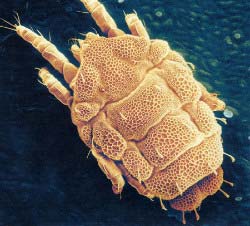| Entomology Systematics |

|
Systematic Entomology Laboratory

 History:
History:
The Systematic Entomology Laboratory (SEL) (/ba/psi/sel) traces its history back to the earliest USDA entomologists in the late 1870s with the appointment of C.V. Riley as Chief Entomologist and the designation of Entomology as a separate division with USDA. Those early scientists along with the collections that they amassed helped start what has become the largest research collections of insects and mites in the world. Allied with the Smithsonian Institution (SI) since the earliest days of systematics research within the United States, many of these pioneering Agriculture Department workers shared honorary appointments with the Smithsonian and in 1881 the insect collections were combined and title to all the specimens was transferred to the SI. Since that time, USDA and SI scientists have continued to build and maintain the collections and pursue collections-based research.
Taxonomic functions within USDA were formally established as a separate division in 1925. The present name, Systematic Entomology Laboratory was established in 1967.

 Research Coverage:
Research Coverage:
At Beltsville we have 1 SY on mites (postdoc), 1 on aphids, 1 on scale insects, 1 on Orthoptera and Thrips, and a Molecular Biologist specializing on leaf mining flies. At the National Museum we have 3 scientists in Coleoptera, 3 in Diptera, 3 in Hymenoptera, 4 in Lepidoptera (1 postdoc), 1 in Heteroptera, and 1 in Sterrnorhycha.
 Research Gaps:
Research Gaps:
Nearly every major ordinal group could use additional scientific support. Highest priority needs are in: Whiteflies & thrips, weevils, moths, parasitic wasps, leaf mining and gall forming flies, and true bugs. Note: The aphid specialist retired the end of May 2002. We are in the process of recruiting a replacement for that position.

 Service:
Service:
SEL staff provide authoritative identifications of specimens for a vast array of customers from state, federal and local governments, private industry, foreign institutions and individuals. Our largest customer is the Animal and Plant Health Inspection Service, Plant Protection and Quarantine (APHIS/PPQ). Last year SEL provided over 12,000 identifications of insects and mites including over 4,000 "Urgent" identifications of specimens intercepted at ports by APHIS/PPQ. Along with our identifications we provide a great deal of additional information on distributions, hosts, origins, etc. US National Insect and Mite Collection History Holdings: Approx. 35 million specimens.
 Locations:
Locations:
Staff in SEL are located in Buildings 005 and 011A at the Beltsville Agricultural Research Center, Beltsville, MD (BARC) and at the National Museum of Natural History in Washington, D.C (NMNH). Collections are located at Building 005 at BARC, at NMNH and at the Museum Support Center in Suitland, Maryland.
 SEL Staff:
SEL Staff:
- 17 Research Entomologists.
- 2 Service Scientists.
- 3 Support Scientists.
- 2 Research Associates (Postdoc).
- 16 Support staff (Technicians, Secretaries, etc.)
